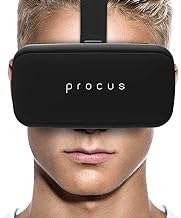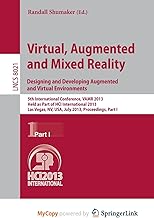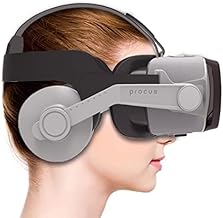how to find Augmented Reality and Virtual Reality ?

1. **Augmented Reality (AR):**
AR overlays information and imagery onto the real world, thereby increasing perception about one’s immediate environment. More often than not, it is seen in the form of smartphone apps, smart glasses, and sometimes even heads-up displays. AR applications range from gaming—like Pokémon Go—to education, such as AR books that bring content alive, all the way to industrial use cases like maintenance support and design review.
2. **Virtual Reality (VR):**
The other extreme is VR, which is an entirely artificial environment interactive in 3D space by users. Haptic VR experiences are largely delivered through head-mounted displays that block out the real world, immersing users in a virtual landscape. Because of that, the technology has a huge following in gaming and entertainment, while it can also be applied to training simulations, therapy sessions, and architectural visualizations.
From improving educational experiences to changing the nature of marketing, from new paradigms in healthcare to questions of safety, both these technologies hold disruptively equal potential across sectors. Indeed, if continuous development in hardware and software goes on, we should see more integration of AR and VR in everyday life, enabling more realistic experiences accessible to bridge the gap between the digital and the physical worlds.
Are there particular applications or simply the latest in AR and VR that might interest you? Let me know how I can be of further assistance in developing these enigmatic technologies!
To explore and engage with Augmented Reality (AR) and Virtual Reality (VR) technologies, you can follow several meaningful steps that cater to your interests, whether they are educational, professional, or simply for fun. Here’s a guideline to help you find and use AR and VR experiences.

1. **Virtual Reality (VR)**:-
For a VR experience, you’ll need a VR headset. Options range from standalone devices like the Oculus Quest or the Meta Quest 2, to tethered systems like the HTC Vive or the Valve Index that connect to a powerful PC. Entry-level cardboards or Google Daydream View can also get you started for more rudimentary experiences. – **Augmented Reality (AR)**: Most modern smartphones are sufficient for AR experiences, as long as they have a decent camera and processing power. AR headsets, like Microsoft’s HoloLens or Magic Leap One, also provide more immersive AR environments for industrial or professional use.
2. **VR Apps and Games**:-
Visit VR platforms like SteamVR, Oculus Store, or PlayStation VR, which provide a vast library of virtual reality applications and games. Look for reviews and recommendations to identify popular titles that match your interests. – **AR Apps**: For smartphone-based AR, visit app stores (Apple App Store or Google Play Store), where you’ll find a plethora of applications covering everything from games and educational tools to productivity and design apps. Popular examples include Pokémon Go, Snapchat’s AR filters
3. **Educational and Professional Use Cases**: –
Check out educational AR apps that can help students visualize abstract concepts in science, math, and history. Titles like Elements 4D or GeoGebra Augmented can offer interactive and engaging learning experiences. – **VR Training and Simulations**: If you’re interested in the professional application of VR, consider trying out industry-oriented software for medical training, military simulations, or engineering design review. Look for platforms like Unysis, Osso VR, or ENGAGE that offer specialized training modules.
4. **Community and Forums**: –
Join AR and VR communities online. Websites like Reddit, with subreddits such as r/VR, or professional networks on LinkedIn for VR/AR professionals, can connect you with like-minded individuals and provide up-to-date news and content. – Attend virtual or physical AR/VR meetups and conferences. Events such as the Virtual Reality Los Angeles (VRLA), Augmented World Expo (AWE), or SIGGRAPH showcase the latest developments and offer networking opportunities.
5. **Learning Resources**: –
If you are interested in creating your own AR/VR content, explore platforms like Unity, Unreal Engine, or Vuforia. These tools provide powerful environments for developers to create immersive experiences, and they also offer tutorials and resources for beginners. – **Online Courses**: Platforms like Coursera, Udemy, and edX offer courses on AR and VR development, from beginner to advanced levels. These courses can help you understand the technology and learn to create your own projects.
6. **VR/AR Social and Gaming**: –
For social VR experiences, try platforms like VRChat or AltspaceVR, which allow you to meet people in virtual landscapes and attend virtual concerts, events, and gatherings. – VR gaming platforms now offer multiplayer games like Beat Saber, Job Simulator, or Rec Room, which provide entertaining and competitive gameplay with an immersive twist.
By following these steps, you’ll be able to dive into the exciting landscapes of AR and VR, experiencing a new dimension of digital content. Remember, the field is rapidly evolving, so keep an eye on updates and advancements in technology to stay informed and engaged! If you need further guidance or have specific inquiries, feel free to ask!








Leave a Reply